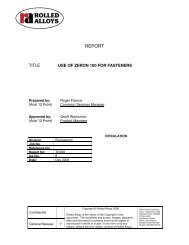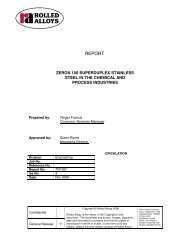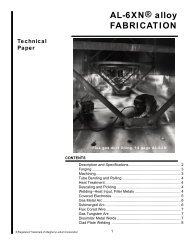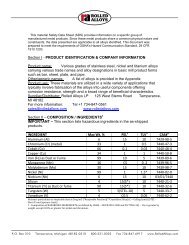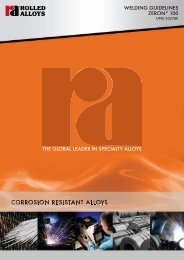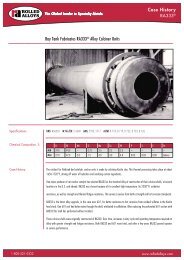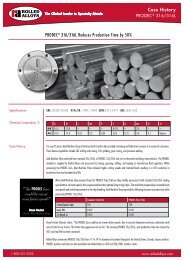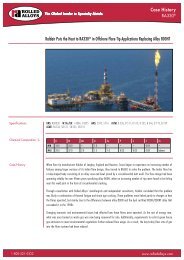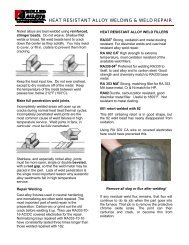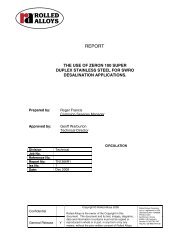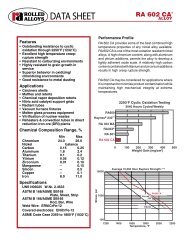RA330®a - Rolled Alloys
RA330®a - Rolled Alloys
RA330®a - Rolled Alloys
Create successful ePaper yourself
Turn your PDF publications into a flip-book with our unique Google optimized e-Paper software.
10. THE RIGHT CURRENT<br />
DC lime type electrodes, such as RA330-04-15, work only with direct current (DC). If they<br />
are connected to alternating current (AC) it will be very difficult to keep the arc from<br />
extinguishing. The use of an AC source with DC lime electrodes will be extremely unsatisfactory<br />
if not impossible.<br />
AC-DC electrodes, such as RA330-80-16 or RA333-70-16, may be used with either alternating<br />
(AC) or direct (DC) current. Still, AC-DC electrodes operate at their best with<br />
direct current, electrode positive (reverse polarity).<br />
11. THE MATTER OF RESTRAINT<br />
Weld metal shrinks—a lot—as it freezes. Either the base metal or the weld bead must<br />
move or stretch to accommodate this shrinkage. During and immediately after solidification,<br />
weld beads have low ductility and may tear if stretched too far.<br />
In a complex assembly, each weld completed stiffens the fabrication. This further restricts<br />
movement of the base metal during the next weld.<br />
This first fillet weld on<br />
plate is easily made.<br />
But the second fillet needs<br />
more care to avoid center cracks.<br />
Edge welds are<br />
naturally restrained<br />
and<br />
the most likely<br />
to crack.<br />
Fillet welds<br />
are less likely<br />
to crack.<br />
Butt welds are<br />
the strongest,<br />
may have least<br />
restraint, and<br />
are therefore<br />
least likely to<br />
hot crack.<br />
When cracking is a problem, consider making the most difficult joint in the assembly first<br />
(such as the edge weld) and the easiest last.<br />
7




